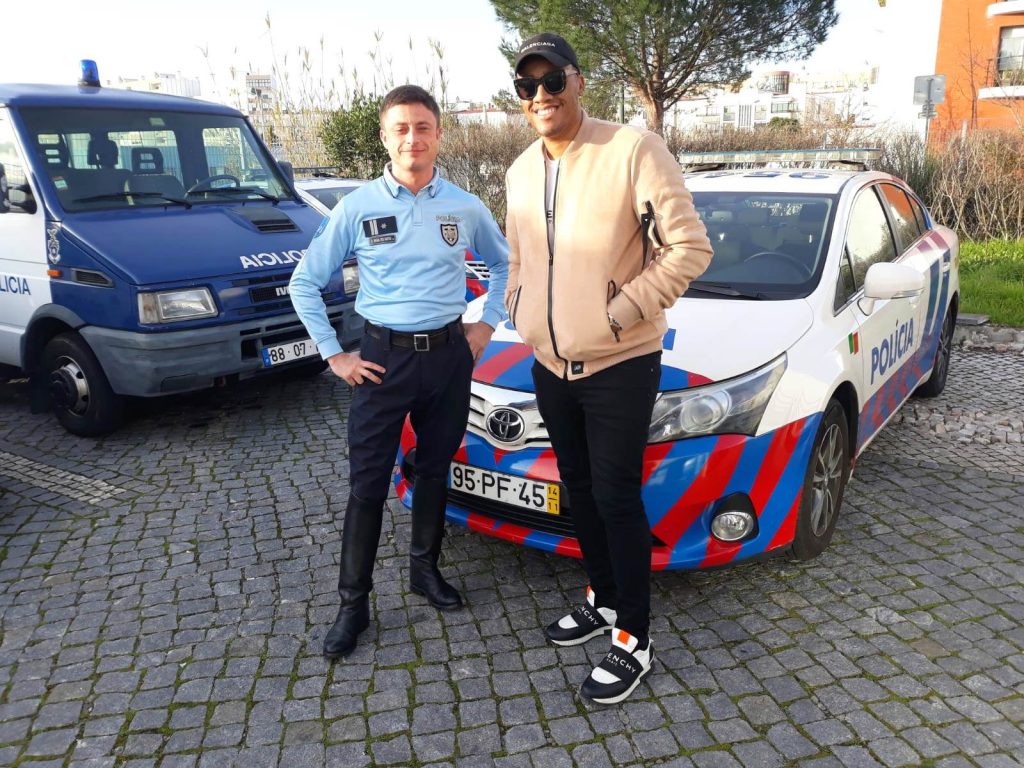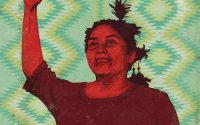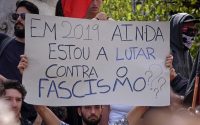Portugal // Racist police brutality triggers black youth protest~ 14 min
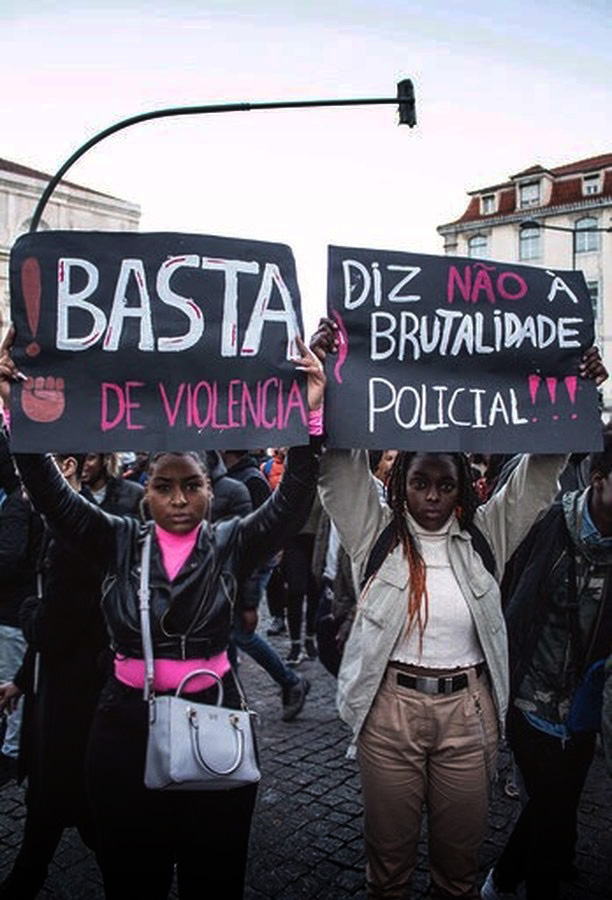
On the morning of January 20, Public Security Police (PSP) was called to the Jamaica neighborhood (a self-constructed set of buildings in Seixal, south of Lisbon) due to a disturbance between two women after a party. According to a local, the half a dozen police agents waited inside their van until the conflict reignited and then immediately began a gratuitous physical confrontation. PSP says one of its agents had previously been struck by a thrown rock. Of course, what this implicitly says is that the locals were “asking for it” and therefore the police acted correctly.
Thus far, it could have been any one of the many PSP interventions in the poor and black neighborhoods of Portugal. Except, this time, it was caught on camera. A shorter version of the video was circulated on social networks. The video shows 5 men and women, between 30 and 60 years old, being savagely beaten. This first video was confronted with the usual “it doesn’t tell the whole story” comments. Meanwhile, a longer version of the video surfaced.
As can be seen, what triggered the police losing their cool seems to have been comments made by the young man who was beaten and then detained, and not any kind of physical aggression. Be that as it may, the original video stormed social networks, especially those preferred by young people, such as Instagram and Whatsapp. In those spaces, far away from the usual spectators, a protest was called which retained the element of surprise until January 21. C., who asked for anonymity, told us:
(…) it showed up in a friend’s Instagram stories. Who shared it from someone else. It actually caught everyone by surprise. They gave no credit. I think it was spontaneous, not even 24 hours had gone by since it was shared. Also considering the young black and white age group present. Most of them students.
But, despite the fact that they aren’t new, these acts of police violence don’t usually trigger demonstrations in downtown Lisbon. C. considers it important that it was the youth’s parents who suffered violence this time around:
(…) they went and committed this brutality against the people most idolized by boys and girls, mother and father. That mother is a mother, grandmother, sister, aunt, cousin and friend of many afrodescendants who already suffer different kinds of segregation and lack of opportunities. In which the mother and the father are the first and only survival solution.
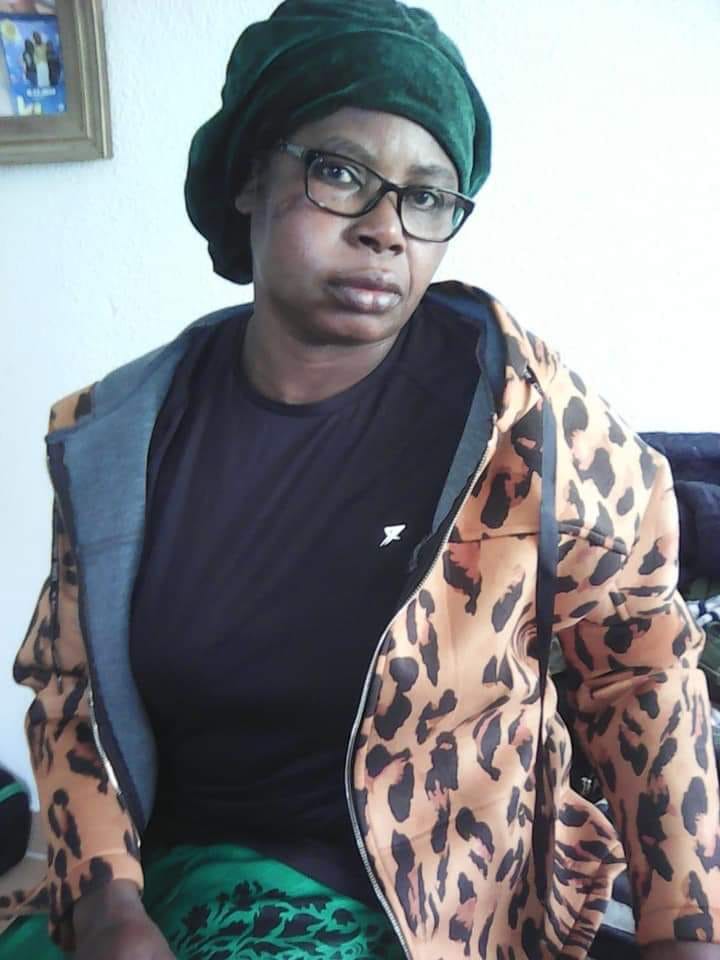
B., who is younger and also wanted to maintain anonymity, said the following about the motivations behind the event:
(…) besides the fact that we are saturated with the brutish actions of the police, it’s also what happened at Jamaica neighborhood.
And about the location:
I think downtown Lisbon was chosen (…) because it’s a more noticeable location where many people circulate and that would make it easier for us to be heard.
The demonstration
Article 45.º of the Portuguese Constitution – Right to gather and demonstrate
1. Citizens have a right to gather, peacefully and without weapons, even in places open to the public, without needing a permission of any kind.
2. The right to demonstrate is granted to all citizens.
The demonstration first gathered in front of the Ministry of Internal Administration at Terreiro do Paço. The demonstrators made several speeches.
The demonstration then headed towards the Avenida da Liberdade, occupying the roads as it passed, including the Avenida itself.
Having chanced upon the demonstration by accident, Miguel de Lemos reported the following:
The chants were: Justice; Down with Racism (these were the ones being shouted at the megaphones!). Since the protesters were occupying the road, many people watched them, including observing tourists, while drivers were indignant. This was [when traveling] in the Rossio-Marquês direction. The cars circulating on the other side of the road showed their support by honking and displaying closed fists. The ambience, excluding the chants and noise, was serene, even when protesters sat at one of the crossroads.
B. says
The people’s reactions (…) some were of annoyance because we were stopping traffic. Other reactions left us filled with joy, such as when we were walking on the road and some cars honked and opened their windows to protest alongside us, saying we were correct and doing the right thing.
The demonstration was closely followed by police wearing riot gear and their vans. Despite everything having developed quietly so far, PSP was working up an excuse to act. Miguel says about their actions:
Right from the start, it was confused, violent and lacking any desire to dialog or calm down the situation. The first provocations were actually made by elements of the PSP. I was able to calm tempers down on two occasions. One of the kids was being pushed (he was on the sidewalk, not on the road) asked what was it that he was doing wrong. I approached and escorted him away.
About the police’s actions, B. says:
PSP’s reaction as soon as they saw a large group constituted mostly by Africans was to start circling and boxing us in. When we arrived at Marquês we had police in front, on our sides… the difference was the “simple” fact that none of the white people (that I saw) got beaten up, shot at with rubber bullets, hit with batons.
Miguel says PSP was targeting some of the protesters in particular:
He was simply the tallest guy, who had the megaphone and was chanting the slogans, same as the ones I described before. An older youth was also called, to whom police gave instructions, but by then I was lead away from the scene: “It’s best you get out of here because we don’t know what might happen”. I headed to one of the rotunda’s sides where several female demonstrators had gathered.
Later still:
At that point I was behind the UEP (Special Police Unit) who started running, as did I. A few rocks were indeed thrown, but I don’t know what caused it. The surveillance cameras at the nearby hotel and parking lot can show what occurred. I know that afterwards, and as I said the UEP had been left behind, some of the elements in numerical inferiority fired shotguns and arrested said young man whom they had identified. This was done violently, 6 / 7 meters in front of me. I stayed with him next to the van that took him away, although no one answered me to where [he was being taken].
Miguel was also placed inside the “box” but, owing to the fact that he is white, was able to escape the police violence. His presence made PSP “very nervous”:
They couldn’t understand the reason why I was present and didn’t like it when I told them I was there as a citizen observing the actions of the police. They then placed me inside the cordon. At that time I was the only white person, which led another policeman to ask me what I was doing there and they pushed me back to the outside of the cordon, with one of them threatening me with “a beating”, quote. By then I had already called too much attention to myself and the UEP chiefs were pointing at me and I decided to cross the street and head closer to the Altis building where everyone started dispersing.
B. says about the confrontations:
Confrontations started when we were going down Marquês and I suddenly heard 4 / 5 shots that police alleges where into the air but yet hit people. We all started running to see what was going on and it was then we saw our brothers being hit with batons and people being grabbed by police.
Photographic evidence has meanwhile surfaced of a young man with a wounded forehead from a rubber bullet impact.
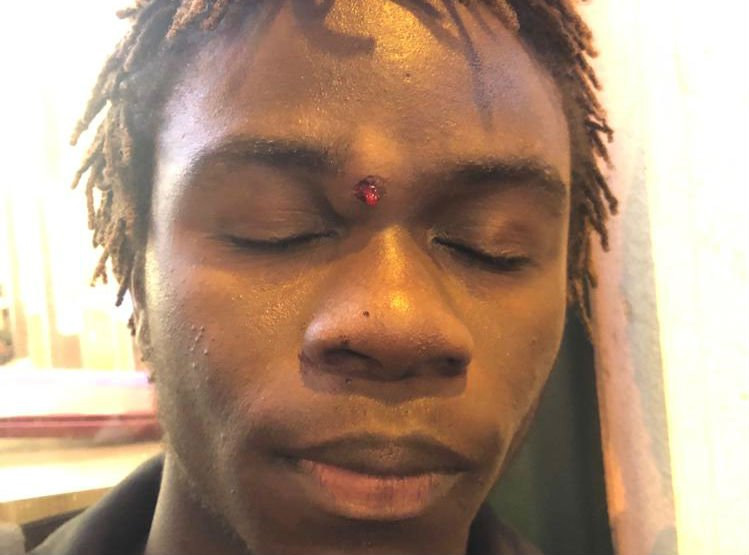
Two centimeters to the side and it could have easily taken his right eye. As it happens all over the world, so too does Portuguese police suffer repeated lapses of attention, pointing rubber bullet loaded weapons at the heads of protesters. This kind of ammunition was first developed by the United Kingdom for use against Northern Irish civilians. After 35 years of usage in said region, between 1970 and 2005, they have caused 17 dead. Its application carries serious risks, especially when shot directly against the head and torso.
Confrontations ended with four arrests. Many of the protesters were shocked at the treatment they received at the hands of police and press. B. said:
PSP doesn’t do much in the day to day. They “protect us”. When they do anything, they always end up hurting us and staining the African community. (…) As always, media only shows what suits them. “Demonstrators attack police forces”, “Police were received with rocks”. LIES! The State doesn’t listen to anything they [demonstrators] say, as is expected.
A text published on social networks condemned:
I was there when 10 wanted to throw rocks and another 200 only wanted peace and to carry out their protest peacefully. I was there when we saw the media distorting our voices right in front of us. When we shouted “No to racism” (…) media said “this is very dangerous”. I was there (…) talking with a megaphone and calming my brothers down when a policemen placed his hand on my back and said “If you don’t stop throwing rocks, we will beat up everyone”.
I was there when, no matter how much my brothers had hate in their hearts, hate of being black in a country where we are constantly oppressed both inside and outside our homes, they shouted loudly “The people united shall never be defeated” because they knew that for [the actions of] one, they would all get it. I was there when police laughed at our faces while we were making speeches. I was there when the police surrounded us like animals, pushed and mocked us. But we kept calm. I was there when we started going down the Avenida and police ran after us and shot the bullet that hit a brother’s face.
Once again, nobody talks about an unarmed black man being shot, but the people will judge a rock thrown at fully armed police. (…) If the police was present to make us feel safe, they should know that myself and all my sisters and brothers felt afraid.
PSP’s history of racist violence
That Portuguese police suffers from excessive zeal in baton usage is already well established. As is the fact that they consider the existence of black and gypsy people to be abominable. The second report by the European Commission against Racism and Intolerance (ECRI, 2002) already mentioned:
There have been several reports of law enforcement officials using excessive force against detainees or other persons with whom they have come into conflict, a large proportion of them immigrants or Roma/Gypsies.
The third report, in 2006, again referred:
ECRI is concerned that there continue to be complaints about racist and
discriminatory conduct by the law enforcement agencies. (…) For example, ECRI notes that in 2003, of the nine applications submitted to the CICDR relating to verbal or physical racist violence, seven involved members of the law enforcement agencies.
Once again, in 2013:
According to NGO reports, racist violence committed by the police has increased over the last five years. Some serious incidents have included shootings of Africans and Roma. (…) However, according to data provided by the authorities, from 2006 until 2012, a total of 31 complaints were submitted against police officers concerning racist or racially discriminatory acts (…) 9 against members of GNR, 18 against members of PSP, 3 against members of SEF (…)
Finally, in 2018:
In January 2014, the prosecutor’s office opened an investigation following allegations of torture committed by inspectors of the judicial police when searching a Roma camp. In April 2016, a police officer was sentenced to one year and three months in prison for shooting a 30 year old Roma with a rifle, seriously wounding him in the face, after the latter had asked if he could help with olive-picking on a farm run by the police officer and several of his colleagues. (…)
A serious case of alleged racist violence in February 2015 eventually resulted in charges being brought, in July 2017, against18 PSP officers, including an officer of higher rank. They were indicted for torture, abduction, vilification and assault and battery on grounds of hatred and discrimination against six Black victims. According to the charge-sheet, the police officers had initially arbitrarily and violently arrested a Black resident of the Cova da Moura district in the Amadora suburb of Lisbon. Although he did not resist arrest, the police officers violently beat him, he fell to the ground and bled from his mouth and nose. (…)
To protect the victim, the five association members, two of them known to be mediators by the police, went to the police station at their own initiative. According to the charge-sheet and witness statements, police officers attacked them as they were approaching the police station, shouting racist insults and dragging them to the police station, where they were handcuffed, thrown to the floor and kicked, punched and slapped all over their body, including the head. In addition, the police shot rubber bullets at them, and one officer shouted: “You don’t know how much I hate your race, I want to exterminate you all from the face of this Earth, you should get out of this country and if it was down to me, you’d all be sterilised”. One of the victims who suffered from paralysis of the right hand received death threats. In this manner, the six victims were detained, tortured and humiliated for two days. According to witness statements, the hospital certified, upon intervention of the police, that the victims had injured themselves falling over. It is also alleged that the police officers cleaned the floor in order to remove bloodstains.
These are just a few of the cases mentioned in the reports. The repeated warnings have been completely ignored. If these documents prove anything it’s that racist police violence isn’t getting better with time. On the contrary, it’s getting worse. Those who still have doubts about the police’s attitudes need only visit one of their forums in social networks where policemen make threats against people of color and left-wing activists and politicians.
The day after the sad spectacle PSP orchestrated in Avenida da Liberdade, PSP’s carefully managed Facebook published an already previously published photo of a smiling agent next to Anselmo Ralph. How can PSP be racist? It even has a black friend.
